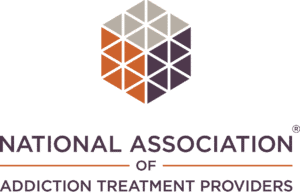Detoxing from substances can be a daunting and challenging process. Understandably, you might be tempted to take matters into your own hands and try detoxing at home. After all, who wouldn’t want to handle such a personal and sensitive process in the comfort of their own space?
However, what many don’t realize is that detoxing at home can be extremely dangerous, even life-threatening. The risks far outweigh the perceived benefits, and this is where professional help becomes essential.
Essential Takeaways
- Safety First: Professional detox ensures medical supervision, reducing the risk of life-threatening complications compared to at-home detox.
- Personalized Care: Tailored treatment plans address your unique needs, including withdrawal management and mental health support.
- Ongoing Recovery: Detox is the first step; continued treatment is crucial for lasting sobriety and addressing underlying issues
In this post, we’ll explore why at-home detox is risky and why seeking professional help is a crucial step in your recovery journey. Whether you’re considering detox for yourself or someone you care about, this information could be life-saving.
Understanding the Temptation of At-Home Detox
Let’s start with the obvious question: Why do so many people consider detoxing at home in the first place?
It’s often a mix of factors—privacy, convenience, and cost being the most common. Many people feel embarrassed about their substance use and want to keep their detox private, avoiding the stigma that can sometimes accompany seeking help.
Others may think that detoxing at home will be less disruptive to their lives, allowing them to maintain their daily routines without the need to check into a facility. And then, of course, there’s the issue of cost. Professional detox services can be expensive, and the idea of avoiding these costs by managing detox on your own can be appealing.
But while these reasons are understandable, they don’t change the fact that at-home detox is fraught with dangers that can lead to severe complications or even death. Detoxing is not just a matter of enduring uncomfortable symptoms—it’s a medical process that requires careful monitoring and management to ensure safety.
What Happens During Detox?
To fully appreciate the dangers of at-home detox, it’s essential to understand what happens during detoxification.
Detox is the process of allowing the body to rid itself of a substance while managing the symptoms of withdrawal. The symptoms of withdrawal can vary widely depending on the substance, the duration of use, the amount used, and the individual’s overall health. However, withdrawal is almost always uncomfortable and can be dangerous.
The Physical and Mental Impact of Substance Withdrawal
Withdrawal symptoms can affect both the body and the mind. Physically, the body reacts to the absence of the substance it has become dependent on, leading to a range of symptoms such as nausea, vomiting, sweating, shaking, and, in severe cases, seizures and heart problems. Mentally, the individual may experience anxiety, depression, irritability, and intense cravings for the substance.
For example, alcohol withdrawal can cause delirium tremens, a potentially life-threatening condition that includes seizures, severe confusion, hallucinations, and agitation. Opioid withdrawal, while not usually life-threatening, can cause severe discomfort with symptoms like muscle aches, diarrhea, vomiting, and severe anxiety, making it incredibly difficult to endure without medical support. Benzodiazepine withdrawal can also be hazardous, leading to seizures and psychosis if not properly managed.
The unpredictability of withdrawal symptoms is one of the biggest risks of at-home detox. Without medical supervision, knowing how severe your symptoms will be or how your body will react is impossible. This unpredictability can turn what seems like a manageable process into a life-threatening emergency.
Why At-Home Detox is Dangerous
Now that we understand what happens during detox let’s explore why detoxing at home is so risky.
Unpredictable Withdrawal Symptoms
As mentioned earlier, withdrawal symptoms can be highly unpredictable. What might start as mild discomfort can quickly escalate into something much more severe. Without professional supervision, there’s no way to manage these symptoms or intervene if something goes wrong safely.
For example, if you’re detoxing from alcohol or benzodiazepines at home and begin to experience seizures or severe confusion, you may not be able to seek help in time. In a professional setting, medical staff are trained to recognize and respond to these symptoms immediately, reducing the risk of serious complications or death.
The Risk of Relapse
Another significant danger of at-home detox is the increased risk of relapse. Detox is only the first step in the recovery process, and it’s often the most physically and mentally challenging. The intense cravings and discomfort that come with withdrawal can drive many people to relapse, even if they are committed to quitting.
You don’t have the same level of support at home as you would in a professional detox center. There’s no one there to help you manage your cravings or provide encouragement when things get tough. This isolation can make it much harder to resist the urge to use again, especially when the symptoms become overwhelming.
Relapsing after detox can be particularly dangerous because your body’s tolerance to the substance has decreased. This means that using the same amount of the substance that you were used to before detox can result in an overdose, which can be fatal.
Life-Threatening Complications
Detox isn’t just uncomfortable—it can be life-threatening. Certain substances, such as alcohol and benzodiazepines, can cause severe withdrawal symptoms that require immediate medical attention. Even with substances that don’t typically cause life-threatening withdrawal, there can still be serious complications.
For instance, severe dehydration due to vomiting and diarrhea can lead to electrolyte imbalances, which can cause heart problems. Uncontrolled blood pressure during withdrawal can lead to strokes or heart attacks. Medical staff can monitor these vital signs in a professional detox setting and intervene if necessary. At home, these complications can go unnoticed until it’s too late.
The Importance of Seeking Professional Help
Given the significant risks associated with at-home detox, it’s clear that seeking professional help is the safest and most effective way to detox. But what exactly does professional help entail, and why is it so important?
Access to Medical Support
One of the most critical benefits of professional detox is access to medical support. In a professional detox center, you’ll have medical staff available 24/7 to monitor your symptoms, administer medications to ease withdrawal and respond to any emergencies.
This medical support is essential for managing the physical symptoms of withdrawal, but it’s also crucial for your peace of mind. Knowing that you have professionals looking out for you can reduce anxiety and help you focus on your recovery rather than worrying about what might happen next.
For example, medications like benzodiazepines can be used to prevent seizures during alcohol withdrawal, and other medications can help manage symptoms like nausea, anxiety, and insomnia. This makes the detox process more comfortable and reduces the risk of complications.
Tailored Treatment Plans
Professional detox centers don’t take a one-size-fits-all approach to detox. Instead, they create personalized treatment plans tailored to your specific needs. This might include medications to manage withdrawal symptoms, counseling to address the psychological aspects of detox, and nutritional support to help your body heal.
A tailored treatment plan ensures you receive the care you need based on your unique situation. For example, if you have a history of seizures, your treatment plan might include additional precautions to prevent them. If you’re struggling with anxiety or depression, your plan might consist of therapy or medications to help you cope.
This individualized approach not only makes the detox process safer but also sets you up for success in the long term by addressing the underlying issues that contribute to substance use.
Emotional and Psychological Support
Detox isn’t just a physical process—it’s also an emotional and psychological one. The withdrawal process can bring up a lot of emotions, from fear and anxiety to guilt and shame. In a professional detox setting, you’ll have access to counselors and therapists who can help you navigate these emotions and provide support.
This emotional support is crucial for preventing relapse and helping you stay committed to your recovery. It’s much easier to face detox challenges when you have someone to talk to, someone who understands what you’re going through and can offer guidance and encouragement.
Many detox centers offer one-on-one counseling and group therapy, which allows you to connect with others who are going through the same process. This sense of community can be incredibly empowering and helps combat the isolation often accompanying detox.
Debunking Common Myths About At-Home Detox
Despite the dangers, many people still believe that at-home detox is a viable option. Let’s debunk some of the most common myths about at-home detox and set the record straight.
“I Can Handle It on My Own”
One of the most pervasive myths is the belief that detox can be managed independently without professional help. Many people think they’re strong enough or determined enough to handle the process independently.
The reality is that detox is not just about willpower. It’s a complex medical process that requires careful management and support. Even if you’re highly motivated, the physical and mental challenges of detox can quickly become overwhelming without professional assistance.
Many people who attempt at-home detox find themselves unprepared for the severity of their symptoms. This can lead to panic, relapse, or, in the worst cases, life-threatening complications. No matter how determined you are, it’s essential to have professional help to ensure your safety.
“It’s Just Like a Bad Flu”
Another common misconception is that detox is similar to having a bad case of the flu—unpleasant but manageable at home.
While some withdrawal symptoms might resemble flu symptoms, detox is far more dangerous. Withdrawal from certain substances can cause seizures, heart problems, and other serious complications that require immediate medical attention. Even with substances that don’t typically cause life-threatening symptoms, the physical and emotional strain of detox can be overwhelming.
Comparing detox to the flu minimizes the risks involved and can lead to a false sense of security. Detox is not something to be taken lightly, and it’s crucial to have the proper support in place to manage the process safely.
“Professional Detox is Too Expensive”
Cost is often a significant barrier for those considering professional detox, leading to the belief that at-home detox is a more affordable option.
While it’s true that professional detox services can be expensive, the cost of not seeking help can be far more significant. The risks associated with at-home detox can lead to emergency medical situations, hospitalization, or even death, which can result in significant financial and emotional costs.
Additionally, many detox centers offer sliding scale fees, and payment plans or accept insurance, making professional detox more accessible than you might think. Investing in your health and safety by seeking professional help is always worth the cost.
The Path Forward: Choosing Professional Detox
Now that we’ve explored the dangers of at-home detox and the importance of professional help, you might wonder what your next steps should be. Choosing to seek professional detox is a crucial first step in your recovery journey, but it can also feel overwhelming. Here’s what you can expect when you decide to pursue professional detox.
Initial Assessment
The first step in professional detox is an initial assessment. This assessment is typically conducted by a medical professional and is designed to evaluate your overall health, substance use history, and any co-occurring mental health conditions.
During this assessment, the medical team will gather information about your substance use, including the types of substances used, the duration and frequency of use, and any previous attempts at detox. They’ll also assess your physical health, including any medical conditions that could impact the detox process.
This assessment is crucial for developing a personalized treatment plan that meets your needs. It ensures the medical team has all the information they need to provide safe and effective care.
Developing a Treatment Plan
The medical team will develop a tailored treatment plan for your detox process based on the initial assessment. This plan will include the medications and therapies needed to manage your withdrawal symptoms, as well as any additional support you might need.
For example, if you’re detoxing from alcohol, your treatment plan might include medications like benzodiazepines to prevent seizures and manage anxiety. If you have a history of depression, your plan might include counseling or medications to help you cope with the emotional challenges of detox.
The treatment plan is designed to be flexible and can be adjusted based on your progress and response to treatment. The goal is to provide you with the safest and most comfortable detox experience possible.
Monitoring and Support
Throughout the detox process, the medical team will continuously monitor and support you. This includes regular check-ins to assess your symptoms, adjust medications, and provide emotional support.
Monitoring is crucial for detecting potential complications early and ensuring that you’re progressing safely through detox. The medical team will track your vital signs, manage any symptoms that arise, and provide interventions as needed.
In addition to medical support, you’ll also have access to counseling and therapy to help you manage detox’s emotional and psychological aspects. This support is essential for helping you stay committed to your recovery and preventing relapse.
Transition to Ongoing Treatment
Detox is just the first step in the recovery process. Once you’ve completed detox, it’s important to transition to ongoing treatment to address the underlying issues that contributed to your substance use.
This might include enrolling in a residential or outpatient treatment program, participating in therapy or counseling, and developing a long-term recovery plan. Ongoing treatment provides the support and tools you need to maintain your sobriety and build a healthier, substance-free life.
The medical team at the detox center can help you develop a plan for your ongoing treatment and connect you with resources and support services in your community. This ensures that you have a strong foundation for your continued recovery.
Conclusion: Why Professional Detox is the Right Choice
Detoxing from substances is a critical first step in the journey to recovery, but it’s not something to be taken lightly. The dangers of at-home detox are significant, and the risks far outweigh the perceived benefits. Without professional support, detox can quickly become life-threatening, and the chances of relapse are high.
Finding professional help for detox is the safest and most effective way to begin your recovery journey. With access to medical support, personalized treatment plans, and continuous monitoring, professional detox provides the care and support you need to detox safely and successfully.
If you or someone you care about is considering detox, don’t take unnecessary risks by attempting to do it alone. Reach out to a professional detox center and take the first step toward a healthier, substance-free life. Your health and safety are worth it.
FAQs
1. What is the difference between at-home detox and professional detox?
At-home detox involves attempting to withdraw from substances without medical supervision, while professional detox takes place in a medically supervised environment. Professional detox provides continuous monitoring, medications to manage withdrawal symptoms, and immediate intervention in case of complications, ensuring a safer and more effective detox process.
2. Can I detox from all substances at home?
No, detoxing from certain substances, such as alcohol, benzodiazepines, and opioids, can be particularly dangerous without medical supervision. These substances can cause severe withdrawal symptoms, including seizures, hallucinations, and even death, making professional detox essential for safety.
3. How long does professional detox take?
The length of detox can vary depending on the substance used, the duration of use, and individual health factors. Typically, detox can last from a few days to a couple of weeks. The medical team will monitor your progress and adjust the treatment plan as needed.
4. Will I experience withdrawal symptoms during professional detox?
Yes, withdrawal symptoms are a natural part of detoxing from substances. However, in a professional detox setting, medical staff can provide medications and therapies to manage these symptoms, making the detox process more comfortable and reducing the risk of complications.
5. What happens after I complete detox?
After completing detox, it’s crucial to transition to ongoing treatment, such as therapy, counseling, or a residential treatment program. Ongoing treatment helps address the underlying issues related to substance use and supports long-term recovery.









